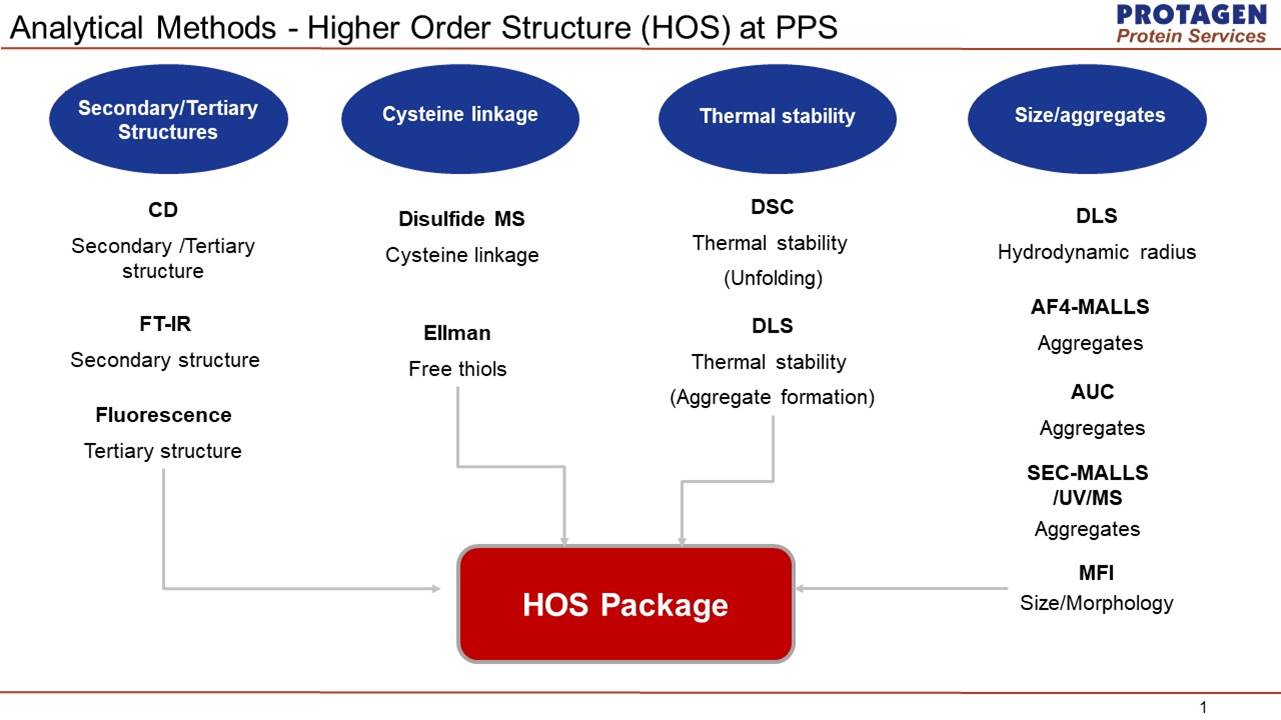A correct and stable high-order structure of a biotherapeutic is essential for its in-vivo efficiency and safety. Encompassing information on a molecule’s HOS is essential and requires different analytical techniques.
Due to their large size biopharmaceuticals generally exhibit complex three-dimensional structure. It is well known that these conformations are an important factor in a protein’s biological function and activity but also might influence the stability and toxicity. Secondary and tertiary structural elements are mainly generated by a hydrogen bonding network and covalent disulfide linkages represent key elements building up the complex three-dimensional structure of a biologic. This structure may be affected by the production, purification conditions and/or the handling as well as the storage of the protein. It is therefore crucial to have orthogonal and reliable methods in place that provide detailed insights into its higher order structure in different phases of a molecules’s development. Information from those technologies provides valuable knowledge from early RnD development / developability to influence from DSP until phase I/II (comparability).
Protagen Protein Services offers a broad portfolio of techniques for analysing different attributes of HOS in order to get maximal insight into a biotherapeutic’s structure and stability. Before all, Hydrogen-Deuterium Exchange (HDX) studies with mass spectrometry have become a critical tool for measuring changes in protein conformation and studying protein higher order structure. PPS has long understood the impact of HDX in helping customers develop a well characterised biopharmaceutical product and provides the according solutions and expertise.

From Circular Dichroism (CD) for the measurement of polarised light near UV range, Fourier Transformed Infrared Spectotroscopy (FT-IR) for the fast analysis of secondary structure features, Fluorescence Scans, Disulfide MS and Ellman tests targeting the determination of free thiols to of testing methods like Differential Scanning Calorimetry (DSC), Dynamic Light Sattering (DLS), Analytical Ultracentrifugation, Chromatography, PPS is perfectly positioned with the most up-to-date technologies and teams of highly skilled experts.
Learn more from our broad analytical spectrum by clicking the link below.
